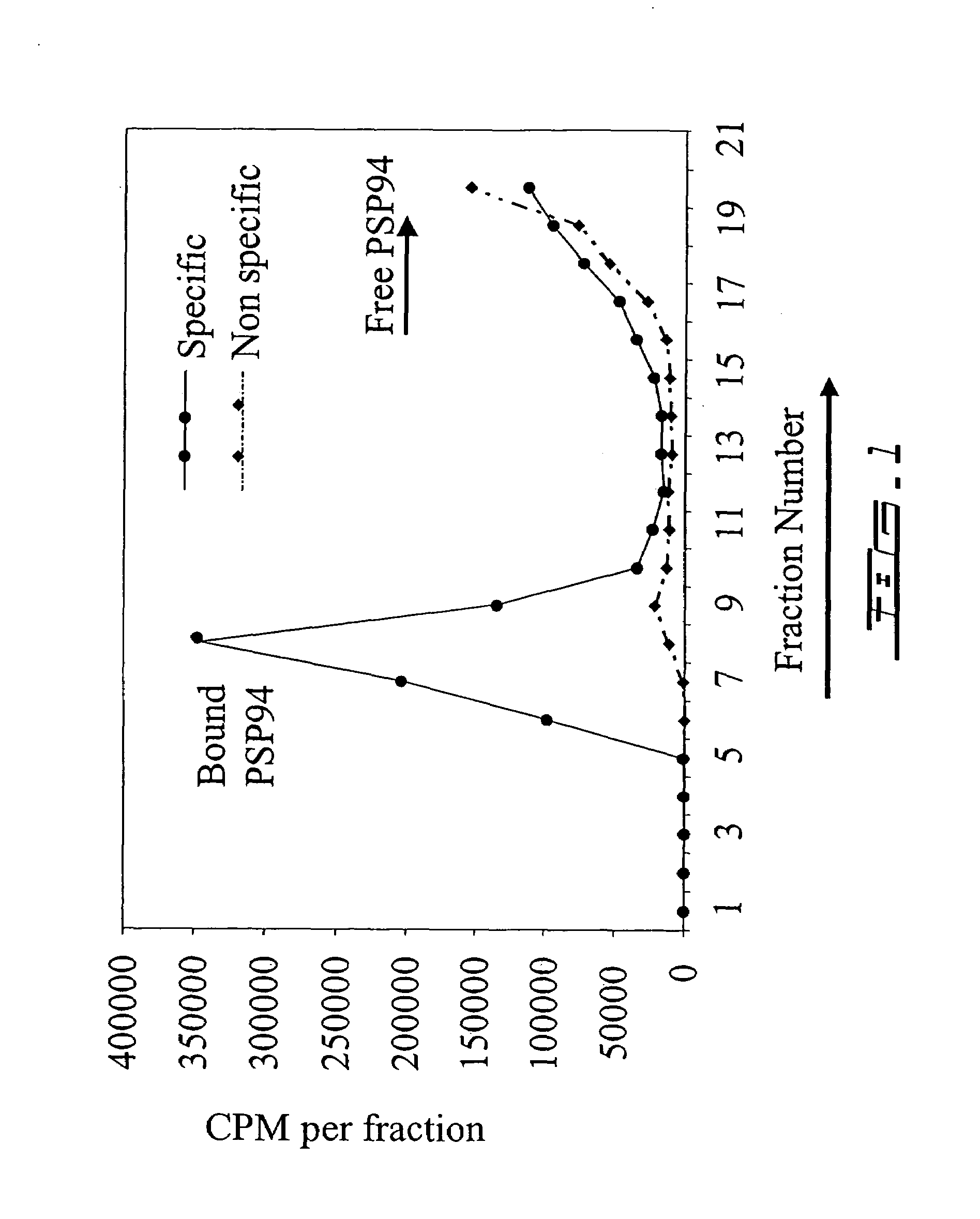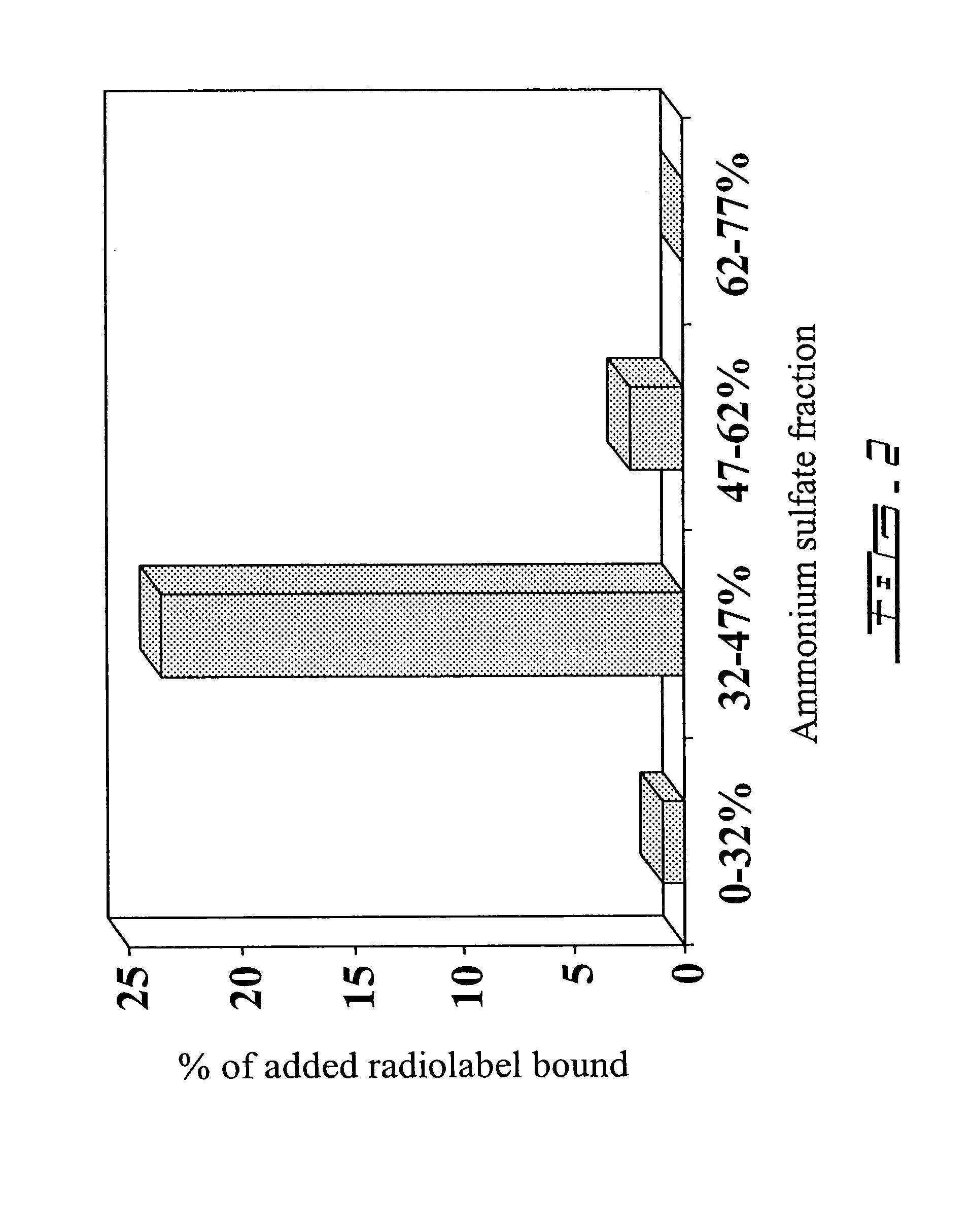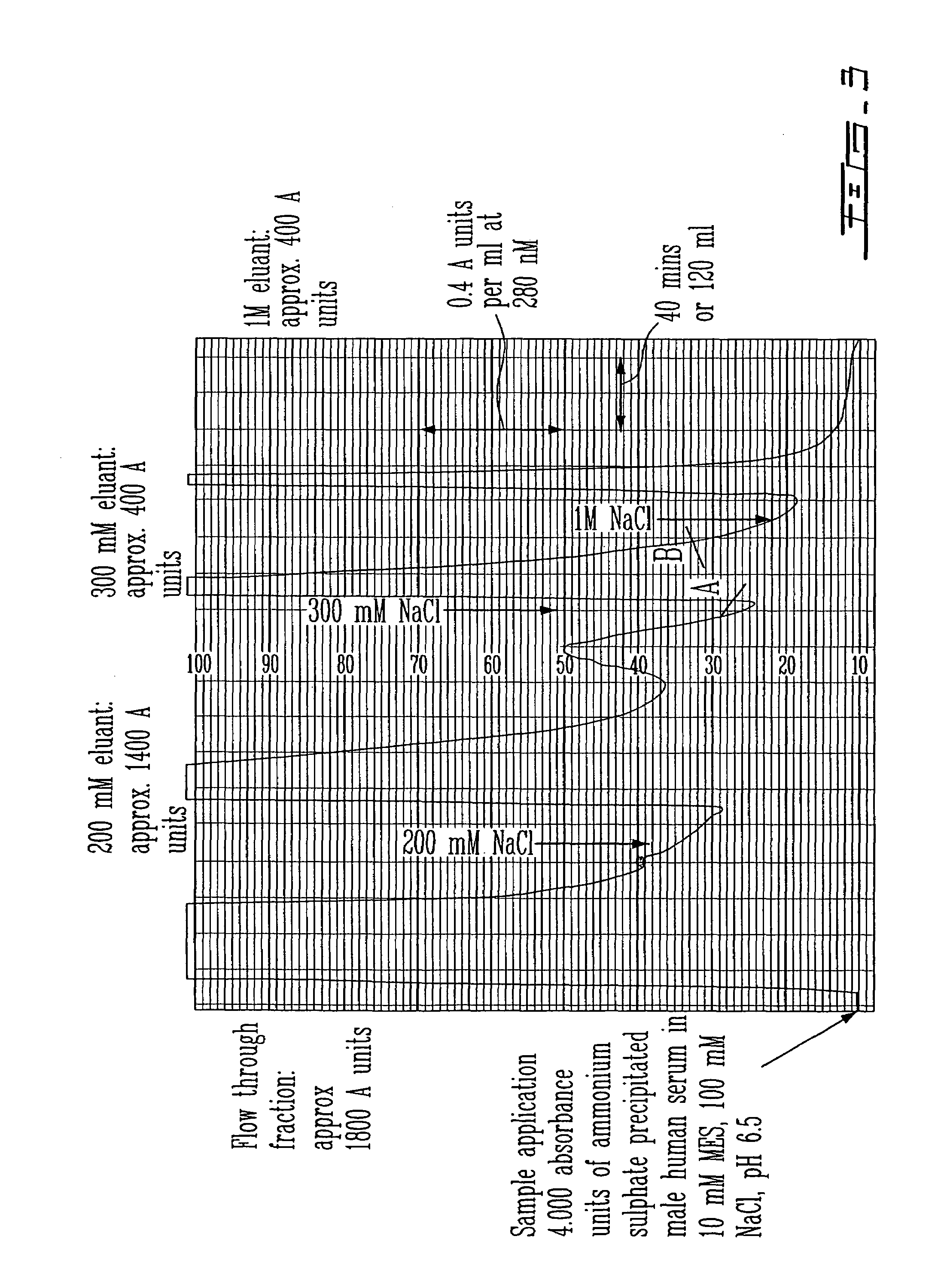PSP94 diagnostic reagents and assays
a technology of psp94 and diagnostic reagents, applied in the field of psp94 diagnostic reagents and assays, can solve the problems of lack of simplicity necessary for a useful and efficient commercial assay
- Summary
- Abstract
- Description
- Claims
- Application Information
AI Technical Summary
Benefits of technology
Problems solved by technology
Method used
Image
Examples
example 1
Isolation of PSP94, Radiolabeling of PSP94 and PSP94-Binding Protein Kinetic Analysis
Isolation and Purification of PSP94 from Human Seminal Plasma
[0348]PSP94 was either prepared as described in Baijal Gupta et al. (Prot. Exp. and Purification 8:483-488, 1996) or alternatively, PSP94 was isolated and (substantially) purified as follow.
[0349]The procedures were carried out at 4° C. Semen samples (Bioreclamation) were thawed at 4° C. for 4-6 hours. Samples were pooled together and the volume was measured. A sample was kept for SDS-Page analysis. Samples were cleared of the sperms by centrifugation (4° C.) at 5000×g for 10 minutes.
[0350]Seminal plasma was precipitated overnight by adding 7 volumes of cold ethanol (without stirring). The next day, the sample was centrifuged (4° C.) at 3000 g for 10 min, washed twice with cold ethanol and was centrifuged between washings. Then, the pellet was resuspended with Endotoxin-free H2O, to the original volume. The sample was transfered to a cold ...
example 2
Ammonium Sulfate Precipitation
[0387]From the kinetic results obtained in example 1, it was shown that the PSP94-binding protein was poorly abundant in human serum.
[0388]In order to isolate a PSP94-binding protein for further characterization and identification, a first purification step was performed by ammonium sulfate precipitation. To establish the appropriate concentration of ammonium sulfate necessary to precipitate a PSP94-binding protein, small scale ammonium sulfate precipitation trials were performed. The presence of a PSP94-binding protein in the precipitate was determined after dissolution and dialysis against PSP94 by radioligand binding analysis as discussed in example 1. These trials determined that the 32-47% ammonium sulfate fraction contained the vast majority of a PSP94 binding material as illustrated in FIG. 2.
[0389]Ammonium sulfate precipitation was routinely performed on a larger scale. Briefly, 1 liter of male frozen serum (Bioreclamation Inc, New York) was tha...
example 3
Ion-Exchange Chromatography Assays
[0391]Ion exchange chromatography (IEX) separates molecules based on their net charge. Negatively or positively charged functional groups are covalently bound to a solid support matrix yielding a cation or anion exchanger. When a charged molecule is applied to an exchanger of opposite charge it is adsorbed, while neutral ions or ions of the same charge are eluted in the void volume of the column. The binding of the charged molecules is reversible, and adsorbed molecules are commonly eluted with a salt or pH gradient.
[0392]Without prior knowledge of any characteristics of the PSP94-binding protein, the ability of anion and cation exchange matrices to absorb a PSP94-binding protein at a range of pH values was determined in a series of ion-exchange assays. Aliquots of ammonium sulfate precipitated serum were exchanged into the buffers indicated in table 3 using a Biorad DG 10 column equilibrated with the appropriate buffer according to the manufacturer...
PUM
| Property | Measurement | Unit |
|---|---|---|
| molecular weight | aaaaa | aaaaa |
| concentrations | aaaaa | aaaaa |
| concentrations | aaaaa | aaaaa |
Abstract
Description
Claims
Application Information
 Login to View More
Login to View More - R&D
- Intellectual Property
- Life Sciences
- Materials
- Tech Scout
- Unparalleled Data Quality
- Higher Quality Content
- 60% Fewer Hallucinations
Browse by: Latest US Patents, China's latest patents, Technical Efficacy Thesaurus, Application Domain, Technology Topic, Popular Technical Reports.
© 2025 PatSnap. All rights reserved.Legal|Privacy policy|Modern Slavery Act Transparency Statement|Sitemap|About US| Contact US: help@patsnap.com



